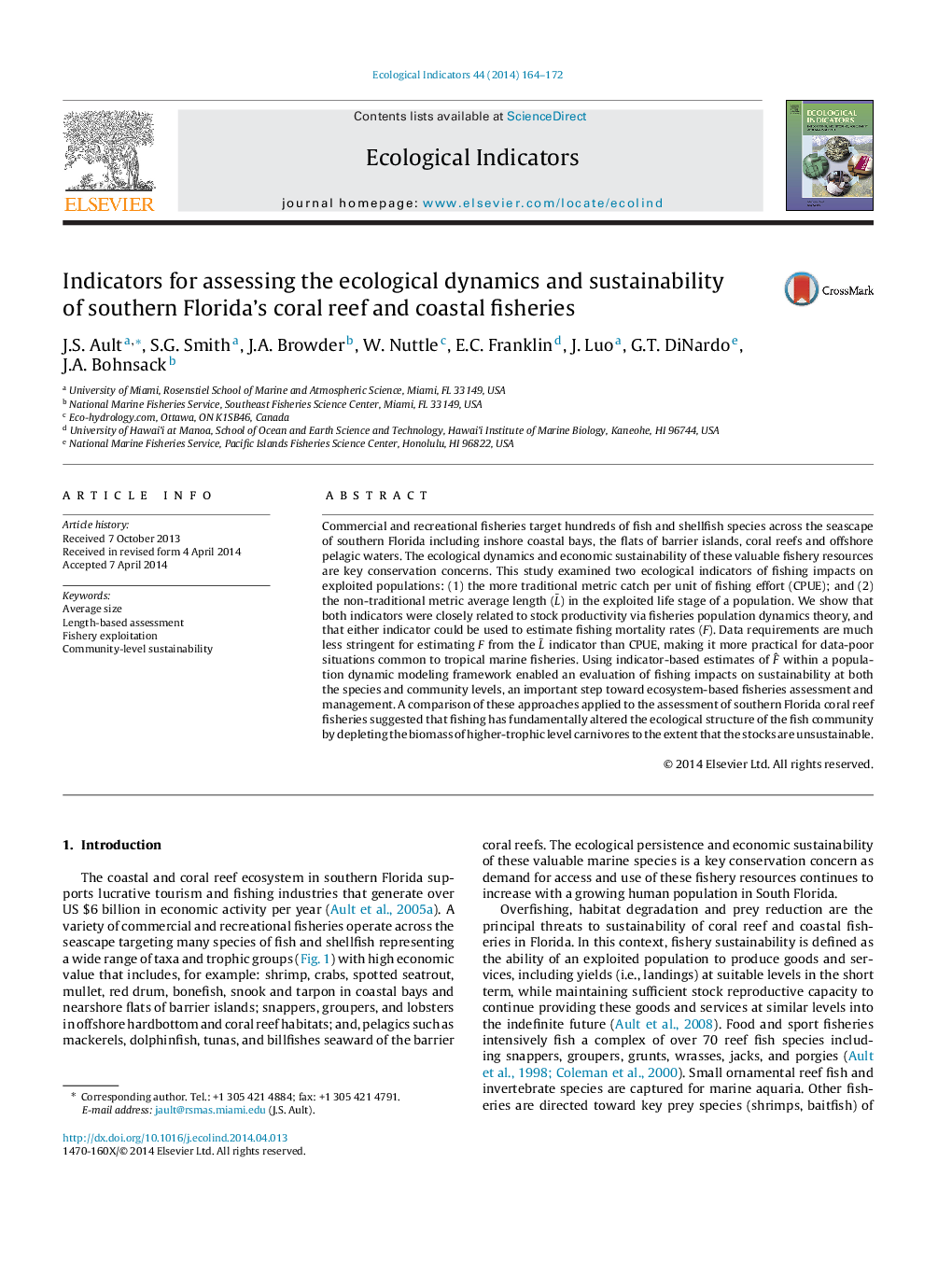| Article ID | Journal | Published Year | Pages | File Type |
|---|---|---|---|---|
| 4373133 | Ecological Indicators | 2014 | 9 Pages |
Commercial and recreational fisheries target hundreds of fish and shellfish species across the seascape of southern Florida including inshore coastal bays, the flats of barrier islands, coral reefs and offshore pelagic waters. The ecological dynamics and economic sustainability of these valuable fishery resources are key conservation concerns. This study examined two ecological indicators of fishing impacts on exploited populations: (1) the more traditional metric catch per unit of fishing effort (CPUE); and (2) the non-traditional metric average length (L¯) in the exploited life stage of a population. We show that both indicators were closely related to stock productivity via fisheries population dynamics theory, and that either indicator could be used to estimate fishing mortality rates (F). Data requirements are much less stringent for estimating F from the L¯ indicator than CPUE, making it more practical for data-poor situations common to tropical marine fisheries. Using indicator-based estimates of Fˆ within a population dynamic modeling framework enabled an evaluation of fishing impacts on sustainability at both the species and community levels, an important step toward ecosystem-based fisheries assessment and management. A comparison of these approaches applied to the assessment of southern Florida coral reef fisheries suggested that fishing has fundamentally altered the ecological structure of the fish community by depleting the biomass of higher-trophic level carnivores to the extent that the stocks are unsustainable.
